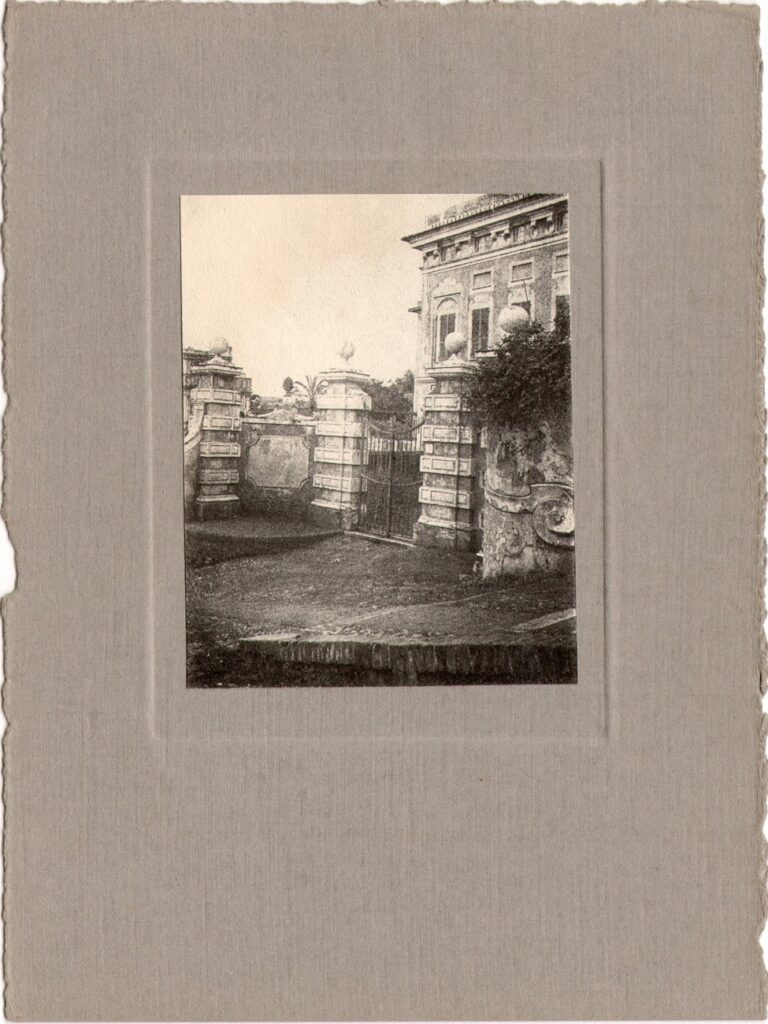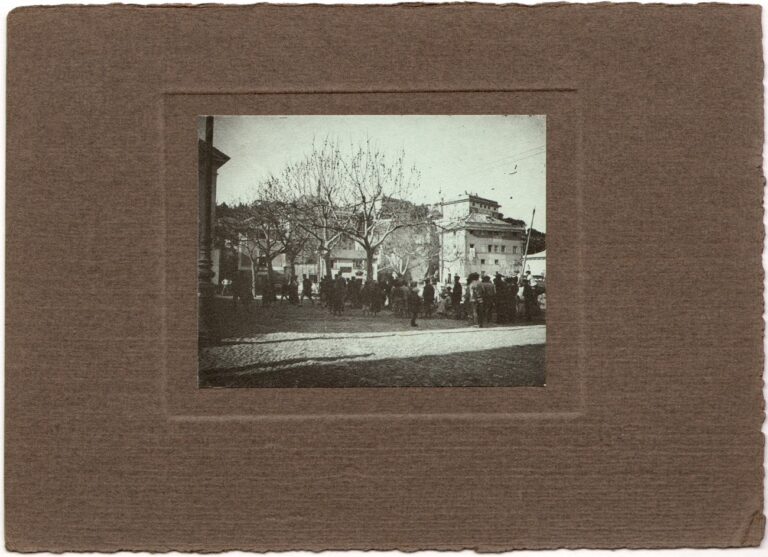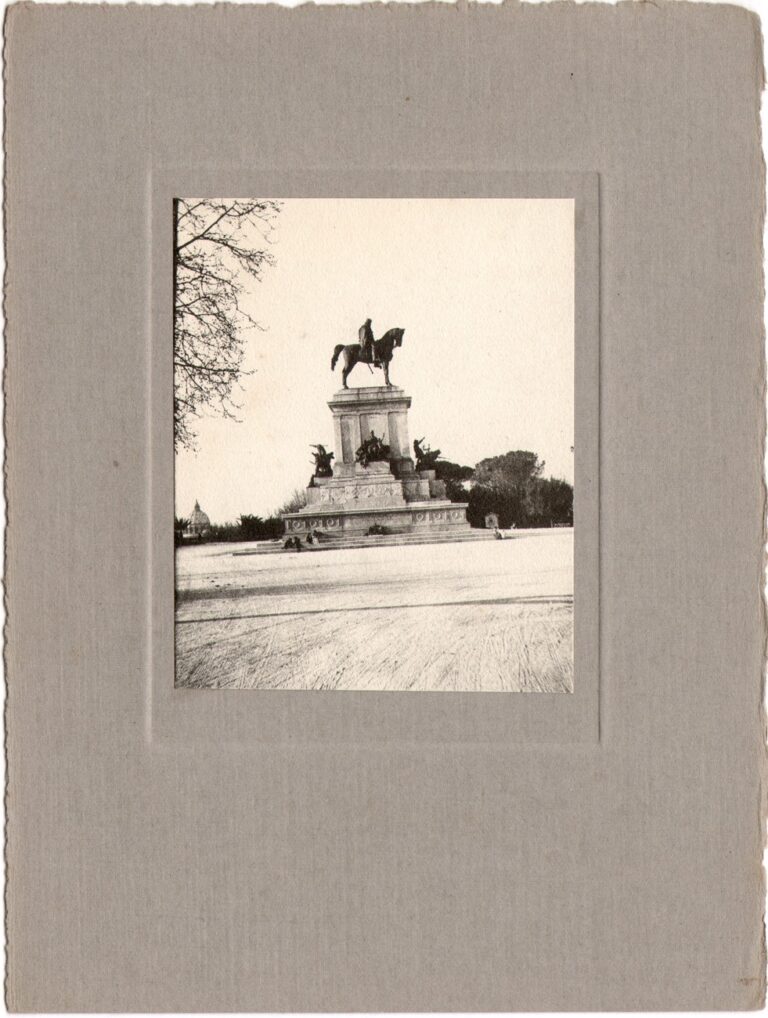
Profile portrait of a Woman
Possibly a copy-negative print from the original gum, although the image quality is unusually fine, a faux-frame has been added to this portrait to replicate the look of a matted photograph, and is a fine example of the portrait work of the era produced by the important Philadelphia commercial photographer Elias Goldensky. The surface of this gelatin silver print has a linen-like surface, and may be an example of Eastman Kodak’s new “Zelta” matt-albumen paper introduced in 1912 actively branded by Goldensky in conjunction with Kodak’s marketing efforts. As early as 1908 as listed in the Photographic Times, the photographer had an active relationship with the Rochester firm, serving as a jury member for their annual Photographic Advertising Contest that year.
In 1912, this continuing relationship is noted in the August issue of Wilson’s Photographic Magazine, in an article on displays featured at the National Convention of the Photographers Association of America held in Philadelphia from July 22-27:
…Some of the manufacturers and their displays were: Eastman Kodak Company, who occupied a commanding position at the head of the grand staircase. They filled the entire foyer with nine large panels draped in green velvet, each panel containing a choice collection of framed prints demonstrating the various good qualities of Artura, black and white and sepia; E-B and E-S platinum paper. The centre panel of the collection provided the sensational surprise of the Convention, a splendid collection of prints made by Elias Goldensky, from his own negatives, on “Zelta” matt-albumen paper, a beautiful product here shown for the first time. Matt-albumen has long been a favorite printing medium in Europe, especially Germany, as witness many of Duhrkoop’s original prints, and it is safe to say that ”Zelta” matt-albumen will soon take its place as the leading printing medium for the best class of trade. The paper has wonderful latitude and produces exquisite tones of sepia, olive browns, grays, reds, and rich blacks. We understand that the paper will be on the market very shortly. (p. 345) (1.)
Immigrant Elias Goldensky, (1867-1943) a Russian jew from the Ukraine, and one of America’s most important photographers who elevated the status of portrait photography to a fine art form beginning in the the late 1890’s, first came to America in 1891 and settled in Philadelphia, where he first worked as a retoucher in the portrait studio of William J. Kuebler before doing similar work as well as printing for Frederick Gutekunst. Goldensky established his first studio in Philadelphia beginning in 1895, making a good a portion of his living photographing the growing Jewish population of the city. (2.)
Print notes recto: EG monogram printed within image; title of work supplied by this archive.
Print notes verso: numbered in graphite at lower right corner in margin: 8461
Published: full-page halftone titled From a Gum Print by Elias Goldensky in the June, 1912 issue of Wilson’s Photographic Magazine. (p. 257)
Collection: Eastman Museum: No title Gift of the 3M Foundation, ex-collection Louis Walton Sipley 1977.0116.0448 (gum print dated 1912)
Provenance: Acquired by this archive in 2018 from a family member of John A. Dick, (1879-1972) who was a traveling demonstrating salesman for the Eastman Kodak Company and ANSCO in the 1910’s. In 1915 he became the first full-time photographer hired by the DuPont Company, retiring in 1943. A specialist in Industrial and commercial photography, he made a name for himself using his #16 Kodak Cirkut Camera to record stunning panoramic photographs, several of which are now in the National Archives in Washington, D.C.
1. A description of Zelta paper from 1912 in Studio Light magazine can be found here.
2. Gary D. Saretzky: background: Elias Goldensky: Wizard of Photography: copyright 1996. This is by far the most important and definitive overview of Goldensky’s life and career.



